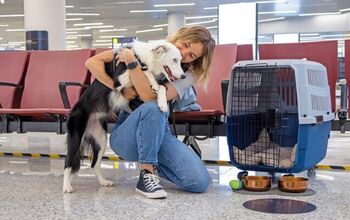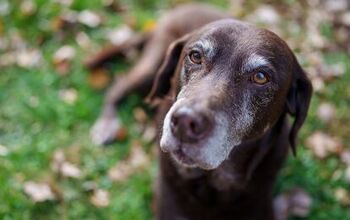How to Treat 4 Common Canine Skin Injuries and Irritations

There are quite a few ways that your beloved pooch can get hurt, especially when it comes to skin injuries and irritations. From minor cuts and burns, to scrapes and allergic reactions, knowing what can cause these problems and how you can provide immediate treatment at home will help prevent them from escalating.
Hot spots are moist, painful, red, irritated, and – you guessed it – hot lesions that can develop on a dog’s skin, usually on the chest, hip, or head. They are also known as acute moist dermatitis, and often start out as small spots on the skin that will eventually increase in size significantly if left unchecked. In fact, they can grow rather quickly, especially if your dog ends up chewing, scratching, or licking them, causing further irritation. So what is the underlying reason for these painful lesions to pop up? A hot spot could be caused by anything that ends up irritating your pet’s skin, forcing them to lick or scratch themselves. Usually, it’s either a bacterial infection or skin inflammation that leads to the forming of the oozing, wet lesions on your dog’s sensitive skin.
Some of the common causes of the infections and inflammations that lead to acute moist dermatitis include insect bites and mites, fleas, allergies, and poor grooming. Often, it’s a combination of all bundled into one- an allergic reaction to an insect or flea bite which was made possible by subpar grooming. However, sometimes there isn’t a more serious cause for hot spots- the reason can be quite straightforward. If your dog is bored, stressed or anxious and constantly chewing or licking their skin, a hot spot could develop in that case as well. The combination of saliva and trauma to the skin from chewing and aggressive licking is irritating enough for lesions to form on sensitive skin. Hot spots are also more common during humid, warm weather, so you might notice your dog dealing with this irritation during the summer, which is also when insects and fleas are prevalent.
In addition to keeping an eye on your dog’s skin to ensure it isn’t irritated or injured, you should also check their paws for injuries and irritations. While paw pads have a rougher texture naturally, it doesn’t mean they are not sensitive at the same time. Extreme temperatures are one of the most common reasons why your dog’s pads can be sore or hurt. During summer months, a simple walk around the block can lead to a world of trouble, as the hot asphalt can burn your pet’s pads. Similarly, during winter, snow, ice, and salt can also take their toll, causing frostbite and surface cuts. Of course, elements are not the only thing to be on the lookout for when it comes to paw pads. Bacterial and fungal infections are a common paw issue, and can often evolve into issues with the pads, as well- so keep an eye on those pooch paws and keep them clean and well-protected at all times.
There are two common ways to protect your dog’s paws when they are outside either in the hot temperatures of summer or the colder winter weather. The first is a popular choice for those that enjoy winter sports like skijoring and dog sledding and that’s the use of paw wax. Paw wax creates a protective barrier on the surface of your dog’s paw pads, preventing snow and ice from collecting while also allowing your dog to perspire normally through the paw pads to better regulate their temperature. For this reason, it’s a popular choice for those that enjoy winter sports. The wax does wear off over time, so it must be reapplied regularly.
The other option is to purchase a pair of high-quality dog booties. You can find boots that offer a durable rubber sole that will protect your dog from the rough, uneven terrains that they can encounter during the winter as well as the hot asphalt during the summer months. They are an investment; however, they work well to prevent unnecessary pain and injuries. In addition to keeping your dog’s paw pads safe, they also offer additional traction when navigating slippery surfaces.
Rambunctious dogs can sometimes end up hurting themselves, and those injuries could involve burns. Everything from boiling liquids, open flames, and electric heating pads, to strong chemicals, heat lamps, and hot metal surfaces can cause your dog’s skin to burn. Needless to say, urgent veterinary care is absolutely a must in any of these cases and you should never leave burns in dogs untreated or come up with treatment by yourself, without an expert examining your pet first. Of course, it doesn’t always have to be trauma or an accident when a pet gets surface burns: not unlike humans, pooches can also have irritated skin due to sunburn. This is especially true for hairless breeds but dogs with full coats can also be affected by prolonged exposure to strong UV rays.
Like it’s the case with any other injuries, your dog will likely try to lick themselves in an effort to soothe their skin and keep her wound clean. However, you will need to step in and provide first aid care to bring her relief and ensure proper healing. Otherwise, your dog’s efforts to heal will turn into further irritations and worsening of the initial issue.
If you have an Elizabethan recovery collar at home, this is a great way to prevent your dog from being able to access the injured area. These are available in a variety of different forms, depending on what works best for your dog, including a hard plastic cone, a soft fabric cone, or even an inflatable collar for additional comfort. Alternatively, you can use a bandage to cover the injury until you are able to get into your veterinary appointment so that your dog cannot irritate it any further.
In addition to superficial skin irritants, there are also eye and ear irritants that can affect your dog. These surface areas of your pet’s body are even more sensitive to trauma and foreign bodies, and what starts out as a mild issue with eyes or ears can become a serious problem if untreated. There are various factors and causes why problems arise with eyes or ears, but knowing the most common ones can go a long way when it comes to prevention and timely treatment. Eye irritation could be caused by infections, allergies, foreign bodies, malformed eyelashes or hair in the eyes, chemical irritation, or scratches. Ear irritants could include infections caused by yeast or bacteria, excessive hair, wax, moisture, allergies, foreign bodies, and mites.
Both the eyes and the ears are areas that should be treated seriously. Failure to address irritants in the eyes or ears can lead to loss of sight or hearing. Regardless of what you suspect may be at fault for the irritation that your dog is experiencing, you should contact your veterinarian ASAP to discuss the situation and the best next steps.
These issues can often be addressed using a medical eyewash, removing any foreign substances from the eyes to prevent any additional complications. Your veterinarian may also prescribe medication to address any scratches or injuries that the irritant has caused. Especially if there is any risk of infection.
Ear irritation is a little more common. Signs that your dog may be experiencing a problem include shaking of the head, scratching the ears, or sensitivity when their ears are touched. In fact, some dogs will experience regular ear infections due to allergies or the environment that they are exposed to. Regular ear cleaning can help to manage allergies, preventing more serious allergies, but it’s occasionally not enough. If you find that your dog is experiencing an ongoing or recurring ear infection, you should speak with your veterinarian about prescriptions options to address the problem. This will involve first identifying the cause of the problem followed by addressing the root of the problem directly.
Vetericyn Plus® products are recommended by expert veterinarians, and they don’t contain any ingredients that would be harmful to your dog. In addition to being non-toxic, they’re easy to administer, so you can quickly give your dog much-needed relief from skin irritation and injuries. In other words, they are a staple of every pet parent’s first aid kit- you should always have them in hand in case your pooch needs quick and efficient care at home. Here are a few of the Vetericyn Plus products that can help you give your dog first aid care in the case of hot spots, pad problems, burns, and more:
- Vetericyn Plus All Animal Wound and Skin Care can be used on your dog’s skin to completely clean out a range of wounds, including scratches, cuts, and abrasions.
- Vetericyn Plus All Animal Antimicrobial Hydrogel comes in the form of an easy-to-apply gel so you can provide your pet’s skin with a protective barrier that can help treat wounds. It is also useful on post-surgical sites, as well as wound beds, hard-to-reach locations, and wound dressings.
- Vetericyn Plus All Animal Eye Wash is ideal for use when you notice your dog’s eye is irritated. Rest assured that this product is formulated to be safe for use in and around the eyes. Use it to clean the eyes and alleviate irritation that has been caused by foreign debris.
- Vetericyn Plus Hot Spot Antimicrobial Gel features advanced hypochlorous technology that can reduce symptoms associated with skin problems like sores, abrasions, and scratches. You can also use it to prevent recurring skin irritations and problems like itchy skin.
- Vetericyn Plus All Animal Ear Rinse can be applied every day to maintain your dog’s clean ears while decreasing the risk of irritation. It can even be used to flush, clean, and care for wounds and irritations that occur within your dog’s ear canal and outer ear, and you can also use it to clean ears affected by irritants like pollutants or contaminants.
If you notice your dog exhibiting symptoms of skin irritation or you see an injury, act quickly to give your pet relief. Remember, when wounds are cleaned and when they’re kept moist, faster healing can be achieved. However, if you’re dealing with a serious wound, it’s always recommended that you consult with your veterinarian right away.

A proud mama to seven dogs and ten cats, Angela spends her days writing for her fellow pet parents and pampering her furballs, all of whom are rescues. When she's not gushing over her adorable cats or playing with her dogs, she can be found curled up with a good fantasy book.
More by Angela Vuckovic
























